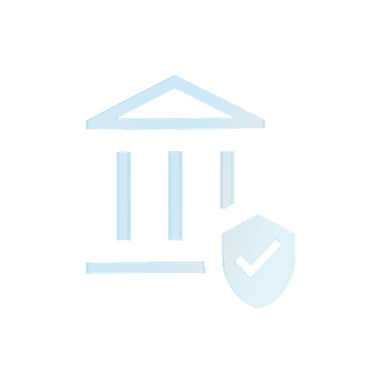
Your Partner in a Web3 World


































Tokenization is reshaping how markets operate – giving assets a shared digital language so they can trade, settle, and interact seamlessly across platforms, asset classes, and borders – while introducing the efficiency and transparency of single database and smart-contract architecture, and the customization that turns financial assets into experiences.
From public and private securities, funds, and derivatives to real-world assets (RWAs) like real estate or art, tZERO transforms traditional assets into on-chain tokens – opening the door for the entire financial world to operate seamlessly on-chain.


At tZERO, we’re building a future that bridges today’s financial markets with tomorrow’s – where tokenization defines how capital is raised, traded, and owned.

Empowering investors and companies with tokenized capital markets


Bridge traditional and digital finance – Build diversified portfolios that span both tokenized and traditional assets through regulated infrastructure.
Fractional ownership – Participate in opportunities traditionally offered to high-net worth individuals through smaller, accessible investment sizes
Unlock liquidity – Trade assets that were previously illiquid, creating flexibility and optionality across private markets
Transparency and security – Every transaction is recorded immutably on blockchain, providing traceability, auditability, and investor protection.
Regulated Intermediaries – Trade with confidence through FINRA- and SEC-regulated entities.

Liquidity
tZERO is a leader among tokenized securities ATSs in the US by total trades.
Liquidity

Investor Services
As part of our universal suite of services, we are an SEC-licensed transfer agent, providing real-time time investor management and a range of corporate actions, while our VerifyInvestor platform provides accreditation and qualification services.
Investor Services

tZERO Chain
We are developing a next-generation blockchain, purpose-built for compliant issuance, trading, and settlement of tokenized RWAs in the US and abroad. The $TZERO utility token will serve as the core transaction and incentive layer for the network.
tZERO Chain

Partnerships
We believe collaboration is essential to driving ecosystem growth. Our partnerships span funding, custody, settlement, wallet and key management – working with leading providers to ensure security and scalability.
Partnerships
tZERO’s Differentiators

Leading end-to-end US broker-dealer platform and full-stack architecture for tokenized securities – issuance, trading, and custody – available to investors and infrastructure institutions.

One of only two SEC-registered digital custody special purpose broker-dealers in the US licensed to operate our own wallet and keys to custody tokenized securities.

Unparalleled Regulatory Moat – one of the most comprehensive regulated infrastructures in tokenized securities, built through years of regulatory and operational rigor.

Regulated ATS - tZERO is a leader among tokenized securities ATSs in the US by total trades.

Regulated services – SEC- and FINRA-regulated broker-dealer, ATS, and special purpose broker-dealer; pending CFTC DCO/DCM licenses.

Protocol, platform and asset agnostic – complementary to most industry participants, including through white labeled “tZERO under the hood” connections.

Digital Funding Rails – supports stablecoin/crypto account funding, bridging traditional finance with Web3 liquidity.

Multi-asset positioning – tested tokenized securities platform, with plans to expand to crypto, derivatives and supports cross-chain interoperability.

Building global rails for tokenized securities through best-of-breed local partners.

Significant blockchain-related IP portfolio with early priority dates.

Unmatched transparency and accountability in our DNA, with digital-first, seasoned team.

Backed by ICE, owner of the New York Stock Exchange and other institutions.
Media & Insights
Discover how tZERO is advancing the future of financial markets.

tZERO Expands Multi-Chain Tokenization Infrastructure to Include Stellar, XDC, and Algorand Networks
As part of its ongoing multi-chain strategy, tZERO Group, Inc., a leading innovator in blockchain-powered multi-asset infrastructure, today announced the expansion of its tokenization capabilities to additional Layer-1 (L1) blockchains – Stellar, XDC, and Algorand – with more to follow soon.

The DTC Tokenization Pilot and the Transition to On-Chain Infrastructure for Capital Markets
The SEC’s recent no-action letter enabling DTC to pilot tokenized securities entitlements marks an important moment for US capital markets – and a clear signal that blockchain infrastructure is moving from theory to practice.

tZERO Announces Partnership with Polymath to Deliver Regulated Real-World Asset Tokenization on Polymesh Blockchain
tZERO Group, Inc., a leading innovator in blockchain-powered multi-asset infrastructure, today announced a strategic partnership with Polymath, the company behind Polymesh – an institutional-grade Layer 1 (L1) blockchain purpose-built for regulated real-world assets (RWAs).

tZERO to Launch 24/7 Order Entry and Extended ATS Trading Hours, Enhancing Interoperability with Broader Tokenized Community
tZERO Group, Inc., a leading innovator in blockchain-powered multi-asset infrastructure, today announced a significant expansion of trading availability on its SEC-regulated Alternative Trading System (ATS).

Uphold Files Application to Offer Tokenized Securities and Partners with tZERO on Infrastructure Services
Uphold submits application with FINRA to launch tokenized securities If approved, Uphold consumer app to integrate tokenized shares in private companies as next frontier of on-chain finance Uphold partners with tZERO for trading, clearing and custody of tokenized securities

tZERO Receives Approval to Offer Retail Access to Tokenized Mutual Funds
NEW YORK, NY – December 2, 2025: tZERO Group Inc., a leading innovator in blockchain-powered multi-asset infrastructure, today announced that its broker-dealer subsidiary, tZERO Securities, has received approval from the Financial Industry Regulatory Authority (FINRA) to act as a retailer of open-end investment companies – commonly known as mutual funds – including tokenized mutual funds.

tZERO Unveils New Brand Identity and Website Reflecting Its Evolution as a Leader in Tokenized Market Infrastructure
New York, NY – November 26, 2025 – tZERO Group Inc., a leading innovator in blockchain-powered multi-asset infrastructure, today announced the launch of its redesigned corporate website and new branding, marking the next chapter in the company’s evolution as a pioneer in the tokenization of financial and real-world assets.

tZERO Appoints Capital Markets Veteran Mike Diedrichs as Head of Sales
New York, NY – November 20, 2025 : tZERO Group Inc. , a leading innovator in blockchain-powered multi-asset infrastructure, today announced the appointment of Mike Diedrichs as Senior Vice President and Head of Sales , effective immediat…

Why Immutability Matters: Blockchain’s Role in Transparent Finance
In a world in which financial transactions occur across borders and platforms, maintaining a single source of truth has always been a challenge. Data is duplicated, reconciled, and revalidated countless times – introducing both cost and risk. Blockchain technology changes that dynamic through one core feature: immutability...

tZERO Launches Crypto and Stablecoin Funding, Expanding Multi-Asset Access for Investors
New capability, powered by zerohash, enables investors to fund tZERO brokerage accounts using stablecoins and cryptocurrencies. New York, NY – November 18, 2025 – tZERO Group, Inc. , a leading innovator in blockchain-powered multi-asset…
Loading...









